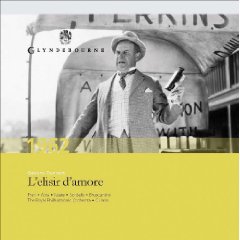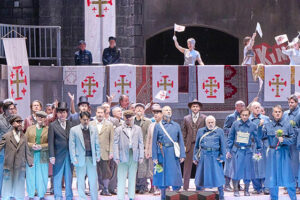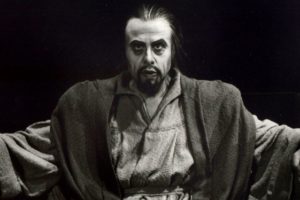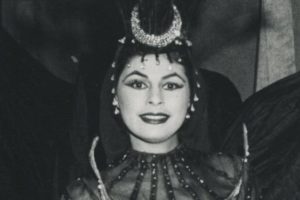
Sometime in the late 1950s, the management at Glyndebourne had the good idea to make archival recordings of the performances there, and these recordings, duly remastered and transferred to digital form, are gradually coming before the public through Glyndebourne’s house label. Thus it is that we find ourselves with this early release, a recording
of Donizetti’s L’elisir d’amore, performed in 1962 by Mirella Freni, Luigi Alva, Enzo Sordello and Sesto Bruscantini under the baton of Carlo Felice Cillario.
The recording itself is remarkably quiet and clear for a live performance. There are none of the audience sounds and sonic quirks normally associated with “bootleg” recordings, and a bare minimum of stage noise. Applause is also rarely heard, leading one to wonder whether the Glyndebourne audience was particularly reticent or whether applause was deliberately limited by the engineers when the recording was prepared.
One suspects a bit of both, which makes for unusually brisk transitions between scenes for a live recording. There are also some sonic limitations due to the technology available for live recording at the time. The result is a certain lack of tonal liveliness that makes Cillario’s slower tempi seem plodding at times, when they might have more life with a brighter sonic palette.
The performance is a valuable historical document, but seems unlikely to unseat familiar favorites among the live and studio recordings of this opera. This is not to say, however, that there isn’t much to admire. Ensemble singing is particularly noteworthy, especially for a live performance. Concerted numbers that all too often turn into a shouting contest are sung at a consistent mezzo-piano and articulated lightly under the principal melodic material.
Nemorino is sung by Peruvian tenor Luigi Alva. He was the reigning tenore di grazia of his era, bridging the interval between the careers of Cesare Valletti and Alfredo Kraus, and this performance finds him in his prime. He was a singer of modest vocal resources, however, and this limited the extent to which he could be expressive with his voice, as well as his dramatic credibility as a romantic figure. While his characterization is well-delineated, it does occasionally give the impression that the lead role is being sung by a character tenor.
A good example of this is Nemorino’s famous aria “Una furtiva lagrima,” which is phrased with great sensitivity and an elegantly spun legato line but with a tone that becomes shallow and reedy at the climaxes just when one might like a bit more vocal cream.
Sordello here has an old-school Italian sound with a fast vibrato and a bit of snarl, which he uses to good effect in portraying Belcore’s self-importance and swagger without resorting to caricature effects. Vocally, he begins a bit stiff, but loosens up as the performance moves along and gives some of his best material in the second act “Venti scudi” duet with Nemorino, keeping in perfect balance with Alva throughout.
Bruscantini, senior among this young cast, also acquits himself well. His voice is among the more vocally present and tonally satisfying on the recording, and his characterization is the strongest among the principals. He manages to express Dulcamara’s sly humor, joy and colorful personality without relying on excessive vocal effects, which is always a risk in this repertoire.
The real star of the cast, of course, is the young Freni as Adina. Her singing is lively and stylish throughout, and it’s quite easy to hear both the chorus and her colleagues come to life whenever she is on the stage. In particular, she displays a remarkable ability to execute notes at the top of the staff with a light touch, keeping them in line with the phrase and avoiding improper emphasis, and yet maintaining a full tone that never “comes off the voice.” Her judicious use of dynamics and expressive rubato make sense out of phrases and cadenze that singers all too often either distort in a display of vocal prowess or barrel through with superficial attention to detail.
If there is to be any criticism of Freni’s performance here, it is the same that describes much of her singing career: stylish, musical, tasteful and beautiful, but not exactly filled with compelling characterization and dramatic life. For example, her singing of Adina’s aria and cabaletta is so skillful that one is disappointed that the second repetition is omitted (although thankfully Cillario didn’t omit the cabaletta entirely, as was common practice in those days). Yet it must be said that one doesn’t hear Adina’s love for Nemorino echoed in Freni’s voice, nor her joy at discovering that love reciprocated.
So her performance is excellent, but in a general sort of way. It comes too early for the possibility of variations, embellishments, customized cadenze and other stylistic choices that were made possible by bel canto revival scholarship. And yet, it is also not particularly personalized with the romantic-era interpretive customs still available in this repertoire. The prevailing impression, then, is a lack of personal involvement with the character, and as a result, sopranos who could never hope to match Freni’s vocal standard have given more compelling performances in this role.
The CDs are slipped into small slots on the inside of the front and back of a hardcover book containing the full Italian libretto with translations into English, French and German, together with a synopsis in all four languages and the usual commissioned article about the piece.
Also included are a few pictures and some details about the production as well as Glyndebourne’s archival recording project. This high quality, attractive and sturdy packaging avoids much of the wasted space, earth-killing plastic and breakage issues typical of the “box set” packaging normally used for opera.
Overall, this is an attractive presentation of a strong live performance by an all-star cast, reflecting mid-20th century performance practice for this repertoire. It will be well worth purchasing for Freni fans on the strength of her performance as well as the historical record of her early career.
That said, it seems unlikely to join the ranks of favored recordings of this work. Even for mid-1960s live performances, it must take second place to the 1967 Bergonzi/Scotto recording recording under the baton of Gianandrea Gavazzeni, which features more expressive, if less polished, singing from the Adina and an altogether better Nemorino.
























Comments